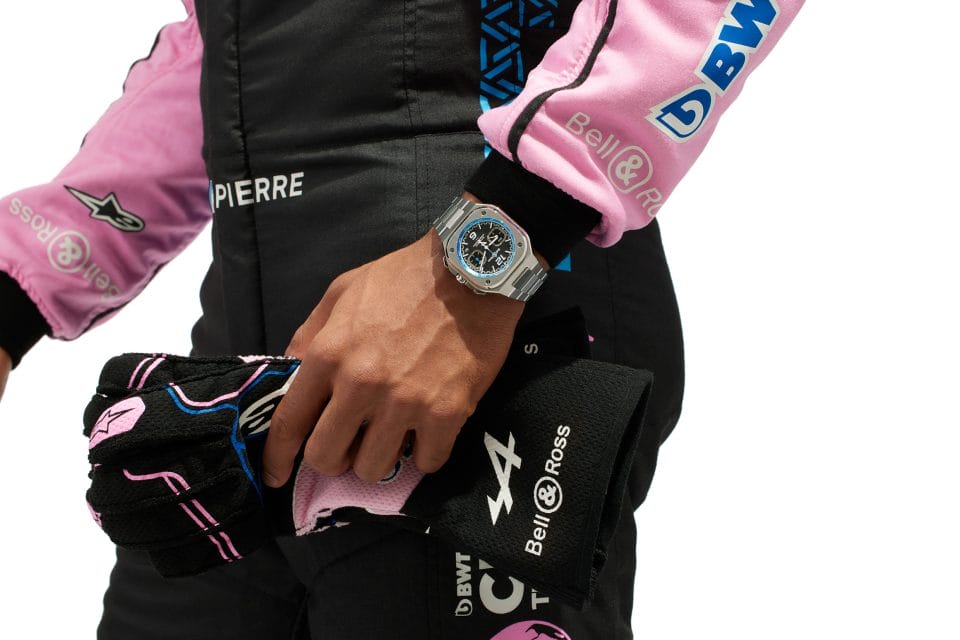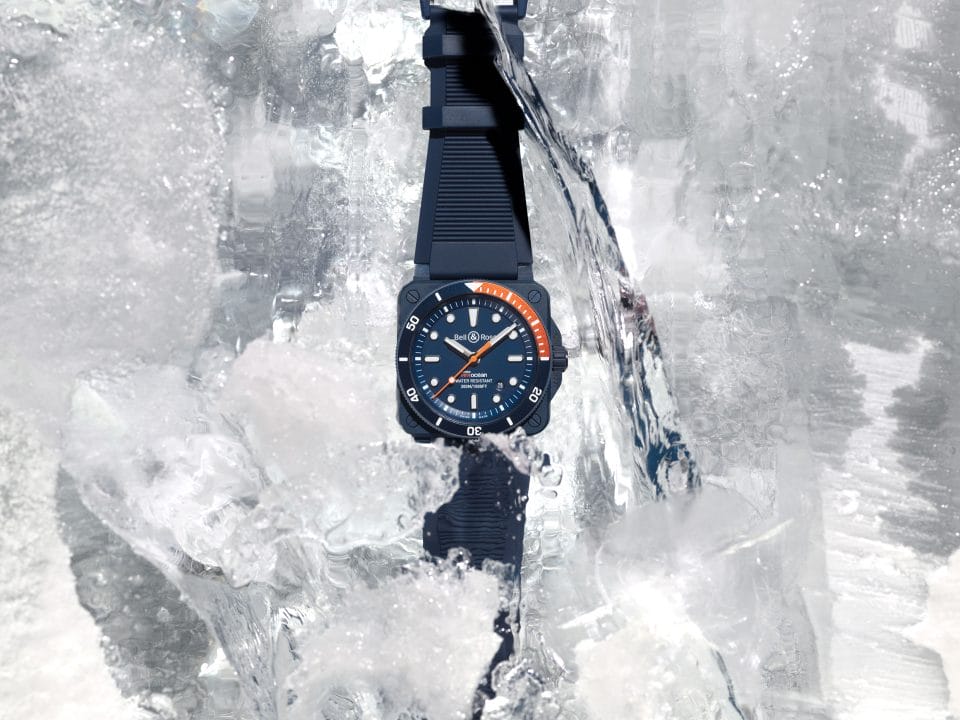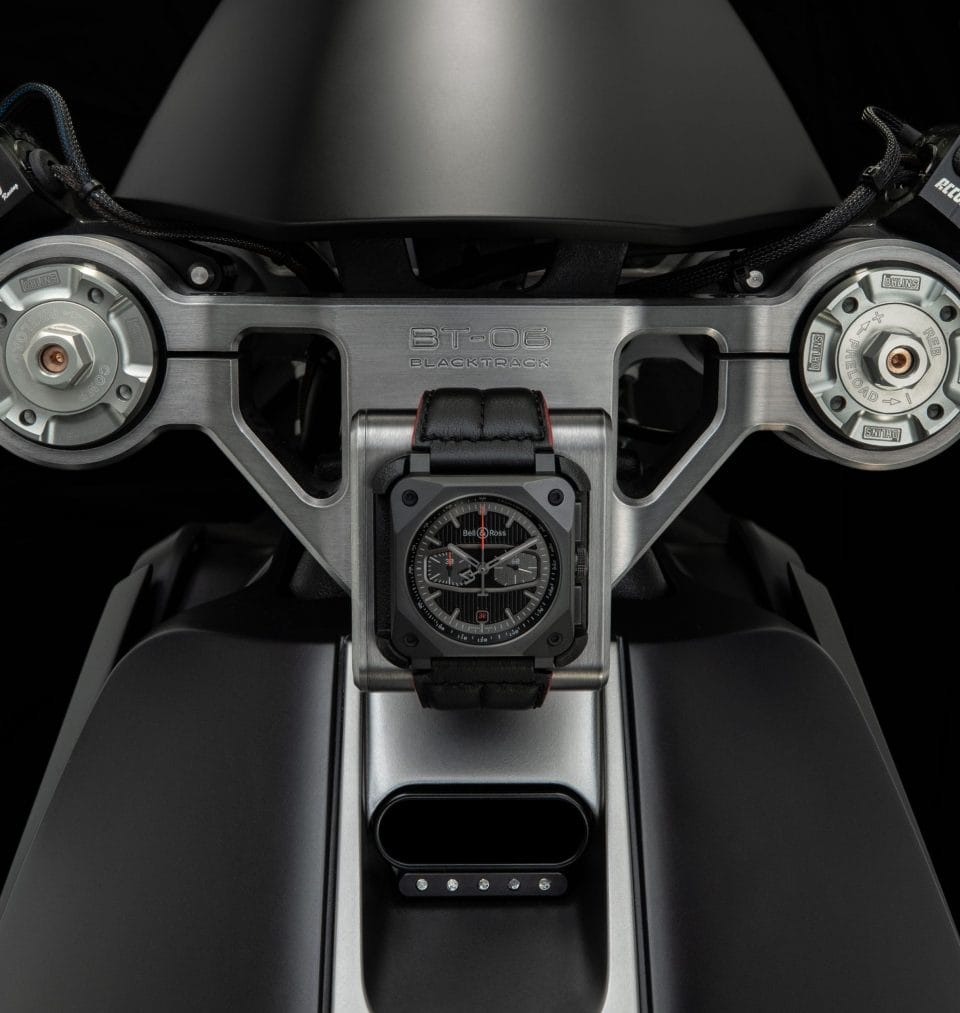 Marie Laure Trichard offers insights into Bell & Ross’ universe and reflects on her journey from the world of champagne to horology.
Marie Laure Trichard offers insights into Bell & Ross’ universe and reflects on her journey from the world of champagne to horology.
With a remarkable journey spanning over a decade, Marie Laure Trichard’s latest adventure finds her at the helm of the Marketing and Communications department at Bell & Ross after being appointed its director in February 2022. Trichard’s venture into the luxury world began in 2010 at LVMH as the International Marketing Manager for Moët & Chandon champagne before she brought her discerning palate and insights to the enchanting world of wine and spirits at the Jacquart, a small champagne house in 2017. Men’s Folio caught up with Trichard during her stopover in Singapore about her time in Bell & Ross to date.
It has been roughly a year and and a half since you joined Bell & Ross. Which aspect of the brand fascinated you the most when you first entered the brand?
Marie Laure Trichard: It’s this very unique universe of aviation. When I entered the office in Paris, there was a plane in the hall and other parts of the aeroplane in the showroom. Once you get over this phase, it’s about the design of the brand image and its consistency. And because I’m someone from the brand, I’m very sensitive to that. I thought the work that has gone into this brand is excellent.
What are some words you used to describe Bell & Ross?
Of course, there’s the iconic circle in the square design, with the four screws surrounding it. Some other words I’d use are robust, legibility and boldness.
 Your past experiences were in champagne and alcohol. When you first entered Bell & Ross, what challenges did you have to overcome quickly?
Your past experiences were in champagne and alcohol. When you first entered Bell & Ross, what challenges did you have to overcome quickly?
You have to get up to speed whenever you join a new universe [industry]. It can be uncomfortable because you’re unfamiliar with the new environment, but I like it because there’s a lot you can learn, which is why I feel a change is great. The big difference between the champagne and watch industry is that there is an effervescence in the latter. In the champagne industry, we work a lot on building the brand, but we have very few new products — but that’s not the case with watches. Every month, there’s a new launch that changes your day-to-day business.
Talking about launches, watch brands used to release their novelties once or maybe twice a year in the past. But it has changed since the pandemic where brands do it seasonally, once every quarter. Which model suits Bell & Ross better?
The one we have now — having the big release at Watches & Wonders and having others spread throughout the year — is perfect for us. The Watches & Wonders period is a time for the industry with all the novelty release coverages. There’s a significant and reinforced interest coming from it. At the same time, introducing new pieces across a year allows us to align and strengthen our communication and garner interest throughout the year. We live in a world with so much noise; these new releases help us cut through them.
How do you fine-tune your communication with the audience when you mention there’s so much noise and distraction?
There are different levels. There’s communication from an institutional level where the brand communication is very clear, constant and consistent so that people recognise you from the repetition. We mix that with new releases through permanent editions, limited editions, partnerships or collaborations, which nourish and bring vibrancy to the brand. These two levels are complementary; they give us permanent communication and 360-degree visibility for the boutiques and retailers. But we need to be updated with these touch points constantly evolving.
 Artificial intelligence (AI) is on everyone’s minds right now. Do you think Bell & Ross would look into AI in the future?
Artificial intelligence (AI) is on everyone’s minds right now. Do you think Bell & Ross would look into AI in the future?
In my opinion, AI is a way to gain efficiency. However, when it comes to creativity, you need the human touch. One of our founders — Bruno Belamich — assumes the role of creative director. His touch and unique approach are the soul of the brand, and are one of the brand’s big strengths. AI can bring a lot but can’t replace the human touch because of its general approach. We should manage how we approach it by maintaining our strengths and what we know, and mixing them with what’s new.
I want to steer the conversation into partnerships. Earlier this year, in January, Bell & Ross announced the partnership with Tara Ocean Foundation, which joins the likes of Patrouille de France and Alpine F1. How do these partnerships help communicate what Bell & Ross believes in?
Bell & Ross watches are meant to be worn and approved by professionals, and these partnerships help bring that aspect to life. A common thread runs through the three partnerships: men and machines working together to serve a mission. If you think about it, the Tara Ocean Foundation, Patrouille de France and Alpine F1 partnerships represent our sea, air and land universes and are all complementary. This is in the brand’s spirit: to be worn by professionals, enriching the brand story and what we stand for.

The aeronautical instrumentation look is Bell & Ross’ signature. However, the BR 05 and X5 offer a slightly different look. Did Bell & Ross see the need to diversify to reach a new audience?
Firstly, as you said, it’s slightly different because it’s important to keep the brand’s essence — the cockpit, the circle in the square design and the four screws. We kept them with the same approach. The BR 05 collection targets active and confident individuals who want something urban but find that the BR 03 doesn’t match their taste. As for the X5, it’s superlative with its multi-material sandwich case construction and the manufacture (in-house) movement. Its design is non-ostentatious, robust and on the higher end with its movement. Together with the BR 05, these two collections allow us to reach a greater audience.
The Flight Instrument collection — such as the recent BR 03 Gyrocompass — is one of Bell & Ross’ strongest releases. Where do you think the limit is regarding creativity and novelty for clients?
There’s no limit to creativity, and that’s the great thing about it. As you’d know, there are a limited number of instruments in the cockpit, but there can be different ways of expressing them, like you’ve seen in past creations. Bruno (Belamich) is so creative and with each new release, there’s such an expectation for them — brand lovers and collectors eagerly await it, and we can see the engagement with them once we release the collection. I’m confident we will reinterpret and create different approaches, and still find creativity for them.
![]()
Bell & Ross is an independent watchmaking brand. Where does Bell & Ross see themselves amongst the big and small indie brands? How does Bell & Ross remain relevant in the client’s minds these days?
To me, you need to be true to yourself and offer something unique and different to stay relevant. Bell & Ross has managed to do it. The watch shape on someone’s wrist is recognisable from afar, and it’s about strengthening this uniqueness and consistency. There’s indeed a fantastic range of watches (from different brands), but when you look at them, their designs are different to Bell and Ross. We are original, and so long you’re unique, you keep your place in the market.
What is your favourite watch out of Bell & Ross’ collection?
That’s a very tough one; I’d say it depends on the season. We are transitioning to autumn in Europe, and I love the BR 05 steel on gold I’m wearing now because it matches many of my looks. But one of the latest releases — the BR 05 GMT Sky Blue — is perfect for summer. I could’ve worn it for travelling, but I love the steel and gold, even though I love many other pieces from Bell & Ross.
Click here to catch up with our December/January 2024 issue once you are done with this interview with Marie Laure Trichard.






